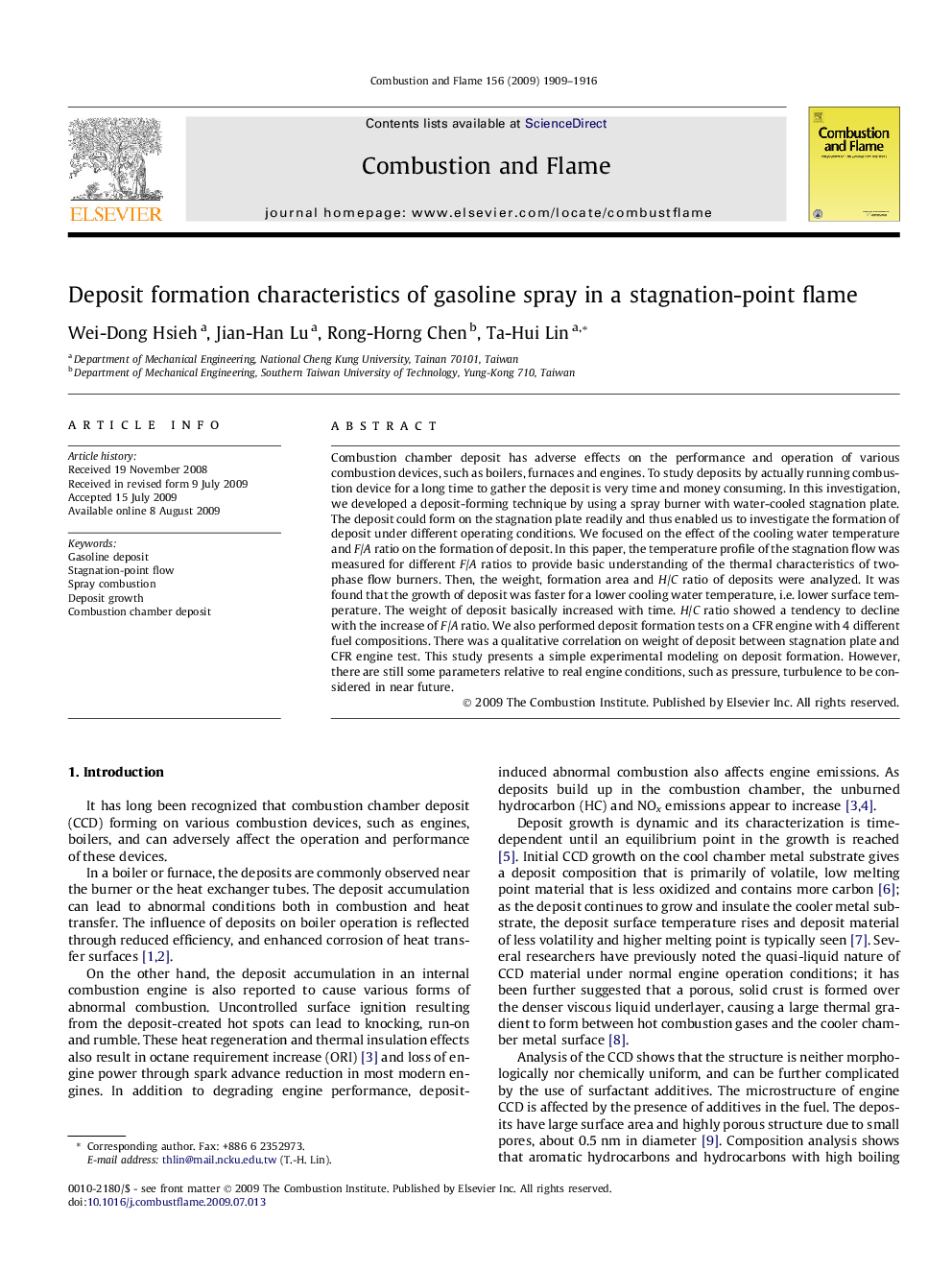| Article ID | Journal | Published Year | Pages | File Type |
|---|---|---|---|---|
| 166769 | Combustion and Flame | 2009 | 8 Pages |
Combustion chamber deposit has adverse effects on the performance and operation of various combustion devices, such as boilers, furnaces and engines. To study deposits by actually running combustion device for a long time to gather the deposit is very time and money consuming. In this investigation, we developed a deposit-forming technique by using a spray burner with water-cooled stagnation plate. The deposit could form on the stagnation plate readily and thus enabled us to investigate the formation of deposit under different operating conditions. We focused on the effect of the cooling water temperature and F/A ratio on the formation of deposit. In this paper, the temperature profile of the stagnation flow was measured for different F/A ratios to provide basic understanding of the thermal characteristics of two-phase flow burners. Then, the weight, formation area and H/C ratio of deposits were analyzed. It was found that the growth of deposit was faster for a lower cooling water temperature, i.e. lower surface temperature. The weight of deposit basically increased with time. H/C ratio showed a tendency to decline with the increase of F/A ratio. We also performed deposit formation tests on a CFR engine with 4 different fuel compositions. There was a qualitative correlation on weight of deposit between stagnation plate and CFR engine test. This study presents a simple experimental modeling on deposit formation. However, there are still some parameters relative to real engine conditions, such as pressure, turbulence to be considered in near future.
